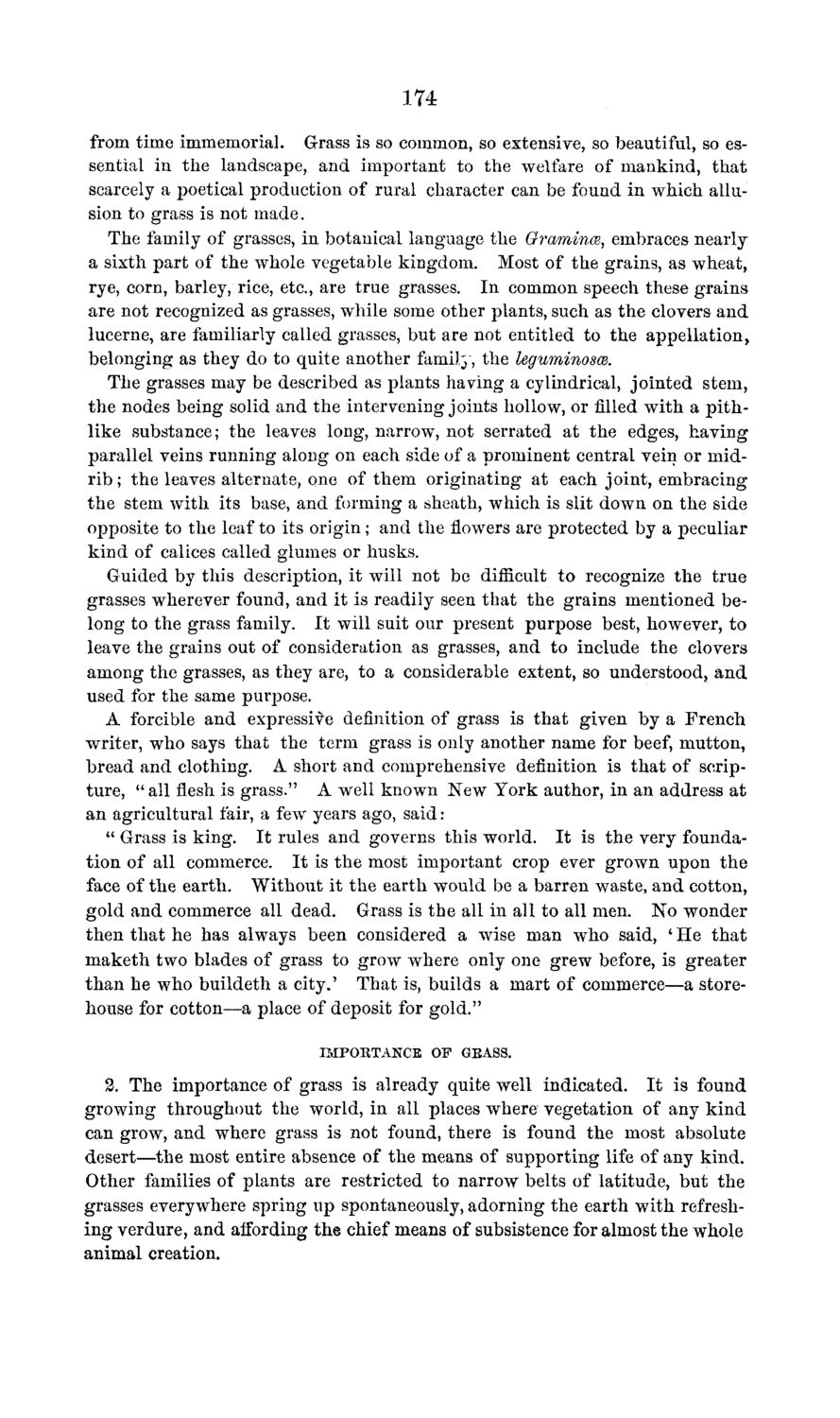| |
| |
Caption: Board of Trustees Minutes - 1869
This is a reduced-resolution page image for fast online browsing.

EXTRACTED TEXT FROM PAGE:
174 from time immemorial. Grass is so common, so extensive, so beautiful, so essential in the landscape, and important to the welfare of mankind, that scarcely a poetical production of rural character can be found in which allusion to grass is not made. The family of grasses, in botanical language the Gramince, embraces nearly a sixth part of the whole vegetable kingdom. Most of the grains, as wheat, rye, corn, barley, rice, etc., are true grasses. In common speech these grains are not recognized as grasses, while some other plants, such as the clovers and lucerne, are familiarly called grasses, but are not entitled to the appellation, belonging as they do to quite another family, the leguminosm. The grasses may be described as plants having a cylindrical, jointed stem, the nodes being solid and the intervening joints hollow, or filled with a pithlike substance; the leaves long, narrow, not serrated at the edges, having parallel veins running along on each side of a prominent central vein or midrib ; the leaves alternate, one of them originating at each joint, embracing the stem with its base, and forming a sheath, which is slit down on the side opposite to the leaf to its origin; and the flowers are protected by a peculiar k i n d of calices called glumes or husks. Guided by this description, it will not be difficult to recognize the true grasses wherever found, and it is readily seen that the grains mentioned belong to the grass family. It will suit our present purpose best, however, to leave the grains out of consideration as grasses, and to include the clovers among the grasses, as they are, to a considerable extent, so understood, a n d used for the same purpose. A forcible and expressive definition of grass is that given by a French writer, who says that the term grass is only another name for beef, mutton, bread and clothing. A short and comprehensive definition is that of scripture, " all flesh is grass." A wTell known New York author, in an address at an agricultural fair, a few years ago, said: " Grass is king. It rules and governs this world. I t is the very foundation of all commerce. I t is the most important crop ever grown upon the face of the earth. Without it the earth would be a barren waste, and cotton, gold and commerce all dead. Grass is the all in all to all men. No wonder then that he has always been considered a wise man who said, * He t h a t maketh two blades of grass to grow where only one grew before, is greater than he who buildeth a city.' That is, builds a mart of commerce—a storehouse for cotton—a place of deposit for gold." IMPORTANCE OF GBASS. 2. The importance of grass is already quite well indicated. I t is found growing throughout the world, in all places where vegetation of any k i n d can grow, and where grass is not found, there is found the most absolute desert—the most entire absence of the means of supporting life of any kind. Other families of plants are restricted to narrow belts of latitude, but the grasses everywhere spring up spontaneously, adorning the earth with refreshing verdure, and affording the chief means of subsistence for almost the whole animal creation.
| |